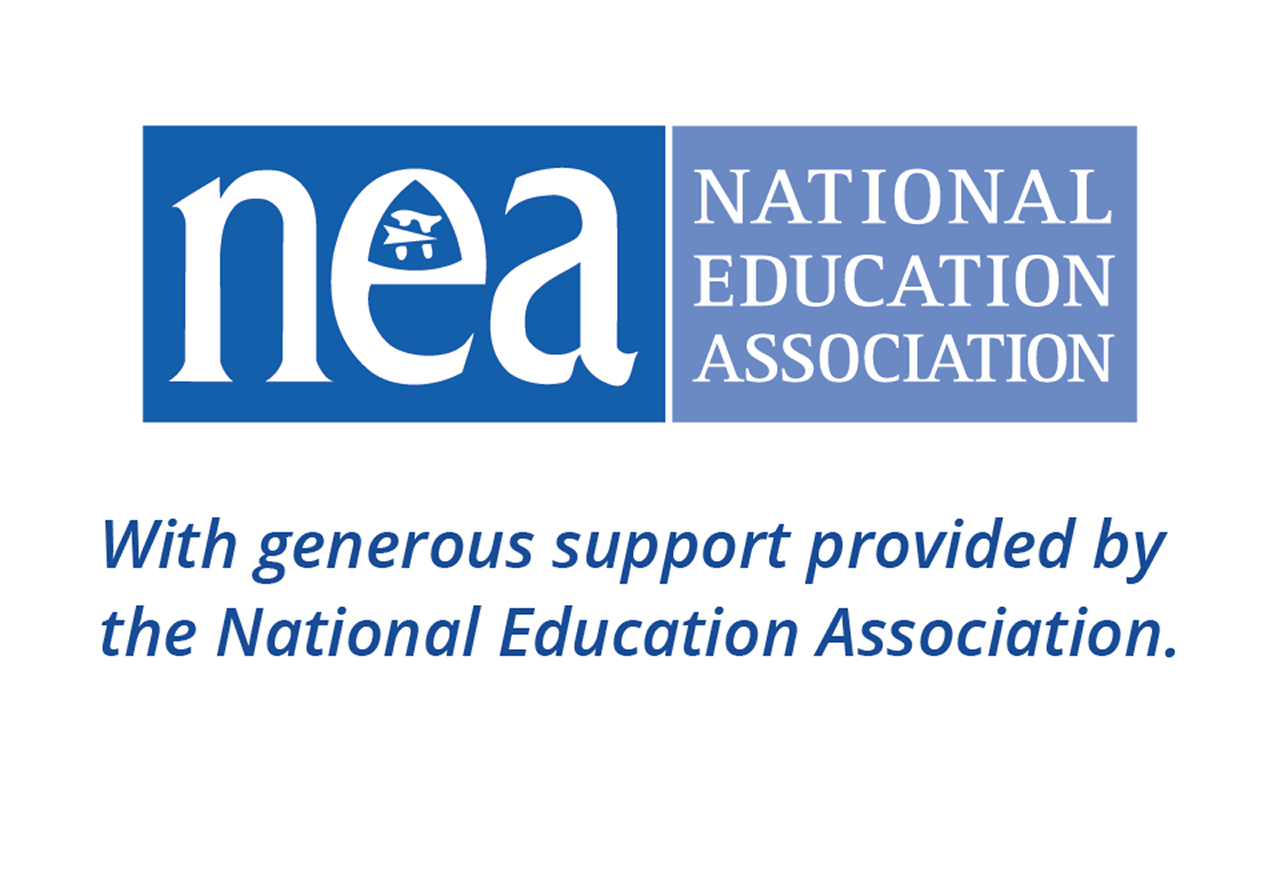You don't want to give false promises, but you also don't want families to feel abandoned. That is where letting kids and families know that you are a consistent member of their world can really help.
– Elementary Principal
Overview
Related resources
Students, families, and staff members have questions about immigration enforcement in schools and early childhood settings. Possible scenarios that come up range from a request for information to an agent entering a school building for the purposes of detaining someone. Here are some steps schools can take to address these questions.
For a quick snapshot, see this helpful infographic on Responding to Immigration Enforcement Issues from the Association of California School Administrators.
Note: Additional information related to early childhood settings is included in our section on young children in immigrant families.
How do concerns about immigration enforcement affect schools?
Concerns about immigration enforcement can impact student attendance, participation in activities, and parental engagement in both K-12 and early childhood settings if:
- families are afraid to go to school, the grocery store, park, library, or day care centers
- they stop family outings
- they do things in a hurry each time they leave the house
- they are late to school because they take different routes each day
- they are afraid to come into the school
- they stop going to medical appointments
- they stop going to community sites that offer social services, including food pantries and shelters.
An update on sensitive location guidance
Previously, the Department of Homeland Security recognized "sensitive locations" where immigration enforcement should not take place without certain prior approvals and "exigent" (pressing) circumstances requiring immediate action. (These included schools, bus stops, and other educational sites, such as college campuses and preschools; houses of worship; and medical facilities.)
This guidance has been rescinded. This does not necessarily mean that immigration enforcement will take place in these locations. However, if they have not yet done so, schools and districts should develop policies for how to handle interactions with immigration enforcement officials in consultation with the district's legal department. Districts should also ensure that all staff, especially front office staff and school resource officers, understand these policies. Local immigration organizations may also be able to provide updates and information.
Note: You can see a helpful collection of updated district policies related to immigration enforcement from Immigration Connections in this updated blog post. Additional resources include:
- Protecting Students' Rights & Privacy: Resource Guide, Templates, and Flow Chart (Wayne County, MI Regional Education Services Agency)
Review any current district policies regarding immigration enforcement
Why this matters
Many administrators and districts have led efforts to put policies in place addressing questions of immigration enforcement. Nevertheless, educators and families may have questions. It is important to be familiar with your own district's policies in order to:
- answer families' questions
- share relevant procedures with staff districtwide, especially with front office staff
- respond appropriately to any relevant situation that arises.
Note: The California School Boards Association suggests that, "School leaders should review with legal counsel any request for student information submitted by Immigration and Customs Enforcement" (p. 4).
Tips for getting started
To ensure that all staff have the most up-to-date information about these policies:
- Find out whether such a policy exists in your district or program.
- If there is a policy:
◦ Check the policy regarding cooperation with law enforcement and immigration officials; many districts have tightened these restrictions or clarified the language regarding immigration enforcement on school grounds and requests for information.
◦ Review and update these policies with district lawyers and immigration organizations as needed.
◦ Share these policies with staff and families across the district.
◦ Ask for clarification in the policies where it is needed.
- If your district has no policy in place:
◦ Look at examples of these kinds of policies, such as this sample protocol.
◦ Talk with school or district leaders about steps needed to establish a school-wide protocol if immigration enforcement agents come to the school. (Sometimes, asking the question is a catalyst for getting a policy in place.)
◦ Share examples of other districts' policies.
◦ Consult with school district attorneys and immigration attorneys as needed.
- If immigration guidance is not forthcoming, you may wish to reach out to community partners, regional educational services agencies, or other organizations that can bring these concerns directly to district leadership in order to provide clarification.
- Review your district's discipline policies to better understand how they may impact immigrant students.
It is important to keep in mind that:
- educators should not give legal advice about what any specific family should do, other than to refer them to a vetted resource or partner organization for more information and support
- any educator or staff member may be asked about immigration enforcement by a student or family
- all children have a legal right to a free public K-12 education
- families have rights about sharing their and their child's personal information under FERPA (see more in our section on protecting students' privacy rights)
Recommended resources
Guides
- Undocumented Students and Families: The Facts – also available in Spanish (The Association of California School Administrators)
- Responding to Requests for Access to School Grounds for Immigration-Enforcement Purposes (California Attorney General)
- Position Paper on Undocumented Students: Recommendations for School Leaders (National Association of Secondary School Principals)
- Immigration Enforcement and Access on School Grounds (Informed Immigrants)
Articles
- Keep Asking Until Someone Responds: How a Small Question Had a Big Impact (Colorín Colorado)
- Finding Answers for Our Immigrant Students and Families: An ELL District Leader's Perspective (Colorín Colorado)
- Creating an Ethic of Community: How School Leaders Make Decisions Related to Immigration Policy (Dr. Emily Crawford-Rossi, University of Missouri)
Keep informed on current events and changes in policy
Why this matters
New or updated immigration policies may be announced at any time by the federal government. In addition, local measures in your school district, municipality, or state may also change. At the most practical level, it will be important to know how any changes in policy may affect your families.
On a broader level, it will be important to know what kinds of issues may be affecting your students, what they hear at home or on the news, and what they are feeling.
Tips for getting started
To stay up-to-date, you can:
- Identify a trusted source of information, such as organizations in the community that are providing regular updates on the issues impacting your families.
- Encourage students, families, and staff to choose their sources of information carefully.
Educators have discussed the difficulty that comes from inaccurate information or news coming from unreliable sources. This confusion prompted a high school student named Katia who came to this country as an unaccompanied minor to speak with some middle school students. She observed, "We got to talk in a circle and we find out, yes, some people are just feeling really stressed and they don't know what's going on. We have come to a conclusion that we need to put more information for parents and scholars to know more about what's going on instead of randomly saying little pieces of things that they heard." See more on the issue of media literacy in 4 Practical Steps to Help Immigrant Families in Your School Community from Education Week.
Be honest with families about the kinds of support you can provide
Why this matters
Educators and school leaders who have been navigating these issues recognize the need to be honest and realistic with families, while reassuring them that they are doing everything in their power to keep students safe. They do not want to offer false hope, but they are striving to address parents' concerns.
Tips for getting started
Administrators can address families' concerns by:
- answering questions honestly
- sharing policies proactively
- asking parents what they would find helpful (such as video-streaming events for parents without requiring attendance)
- reminding families that (1) all children have a legal right to a free public K-12 education and (2) they have rights about sharing their and their child's personal information under FERPA (see more in our section on protecting students' privacy rights)
- keeping lines of communication open.
In addition:
- Talk with colleagues in your school, district, or professional learning communities about how they are addressing these challenging conversations.
- Do your best to understand your own local context and families' concerns. Current approaches to communicating about these issues vary widely, even within the same district.
- Ask families for their input. While some things are beyond your control, there may be other things you can do that would help families feel more comfortable in sending their kids to school and coming to the school themselves.
- Work with community partners such as an immigration advocacy organization to provide accurate, up-to-date information.
Make a plan to care for children whose parents are detained during the school day
Why this matters
Schools and early childhood centers may find themselves in the unexpected position of caring for children whose parents, caregivers, or guardians have been detained during the day. Having some protocols in place for this situation improves the chance of finding an appropriate caregiver for students and providing immediate supports that are needed. Researchers at UCLA studying the impacts of immigration enforcement on schools note that two administrators who responded to their survey reported that they were investigating foster parenting in case they needed to take students home with them (Gándara and Ee, 2018a).
Support for students
Family separation, detention, or deportation can cause intense trauma, stress, economic hardship, and uncertainty for students. Immigrant students whose relatives are detained may be:
- Dealing with trauma
- Navigating legal issues
- Responsible for family finances and caretaking
- At risk of homelessness, food insecurity, and health issues
- In the care of siblings, relatives, neighbors, or designated guardians
Note: Older siblings may be taking care of younger siblings, even at a young age.
Learn more about those impacts as well as how to address them in our sections in this guide on:
- the impacts of immigration enforcement
- what educators need to know about anxiety and trauma
- what it's like to be undocumented
- how to address social-emotional needs of students
- addressing students' basic needs.
Tips for getting started
- Find out if your district/program has a basic protocol for educators to follow if parents, caregivers, or guardians have been detained.
- If so, review it to see what it entails.
- If not, consider creating one that includes:
- what district employees should do if they suspect a parent has been detained or deported
- whom to contact
- where the child should stay until emergency contacts are reached
- guidance on following all parental instructions and exhausting contact options to find a "known caregiver in a safe environment" (Stanford Law School & California Charter School Association, 2017, p. 17) in an effort to minimize referrals to child protective services
- providing emergency/temporary shelter and care as needed
- access to social-emotional support and services
- guidance on working with child protective services should all options be exhausted to ensure the best possible outcomes for the child
- additional actions the school can take to protect children whose parents have been arrested, detained, or are otherwise unavailable.
In addition, make every effort to help families keep their emergency contact information updated, as well as to provide multiple emergency contacts.
Note: As part of California's Assembly Bill 699 (2017), schools in California must take appropriate steps to minimize referrals to child protective services if a parent or guardian becomes unavailable due to immigration enforcement action.
Recommended resources
Following an immigration raid
- 10 Strategies Schools Can Use to Support Students After an Immigration Raid (Colorín Colorado)
- 10 Strategies for How Schools Should Respond to Help Children Impacted by ICE Raids | Infographic (Intercultural Research Development Association)
Articles
- Lessons from Postville: How an Immigration Raid Changed a Small Town and Its Schools (Colorín Colorado)
Guides, toolkits, and recommendations
- Caring for students whose parents or caregivers are detained or deported (Informed Immigrants)
- Responding to the Detention or Deportation of a Student's Family Member (California Attorney General)
- Protecting Assets and Child Custody in the Face of Deportation (Appleseed): This bilingual manual contains detailed information on issues ranging from school safety, child custody, psychological issues for children, special considerations for survivors of domestic violence and sexual assault, and financial services and products including credit cards, debit cards, mortgages and rental payments, taxes, veteran benefits, and much more.
Review local safety partnerships
Why this matters
Many schools have created partnerships with first responders and police community liaisons. Working with local partners can strengthen community relationships and also improve safety if families feel more confident reporting emergencies or other problems. A teacher shared a story with us of a young girl who met a firefighter at school; she later confided in him that, during a family emergency, she felt more comfortable calling the fire department than she would have otherwise.
During times of increased uncertainty, however, families may hesitate to call police, firefighters, EMTs, and other first responders when an emergency occurs. Families may also panic if they see uniformed officers at school.
This is a partner activity to handle with the utmost sensitivity and care. If you have local safety partnerships, it's critical to ensure that all partners share the school's goals for creating a safe and welcoming environment for families. It may also make more sense at this point in time to focus these partnerships on addressing staff questions and concerns rather than direct interaction with families, especially because some law enforcement departments may have an increased role in immigration enforcement. (These policies will vary by municipality, county, and state.) Online updates may also be a better option for communication.
Tips for getting started
- Review goals and expectations with any partners. Do the school's and partner's goals align? If so, communicate the partnership's goals to families so that they know what to expect.
- Determine which activities make the most sense for your school community.
- Remember that school personnel have an obligation to protect students' rights and privacy; there is no "duty" to report undocumented immigrants.
Recommended resources
Recommended videos 
A community partnership with local police officers (Principal Nathaniel Provencio)








Add new comment